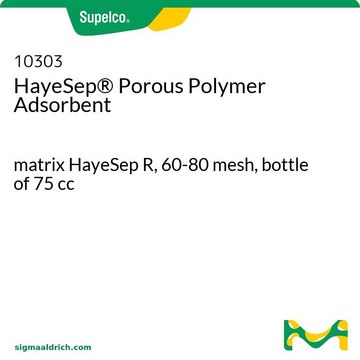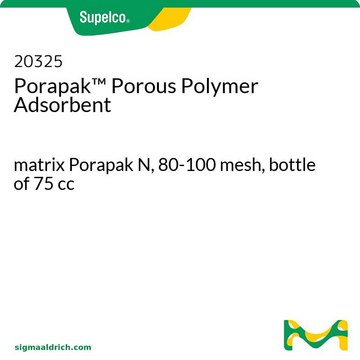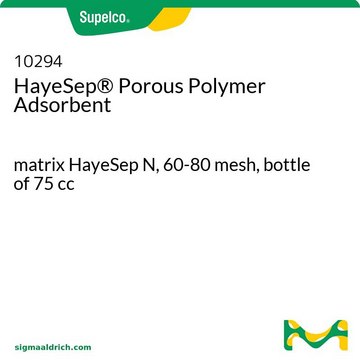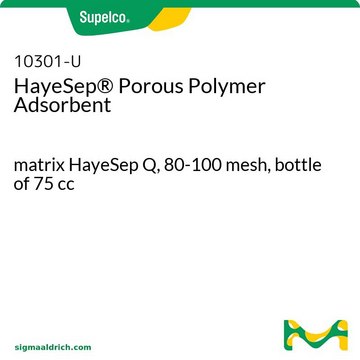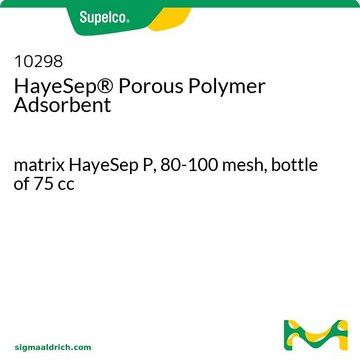10295
HayeSep® Porous Polymer Adsorbent
matrix HayeSep N, 80-100 mesh, bottle of 75 cc
About This Item
Recommended Products
form
solid
Quality Level
packaging
bottle of 75 cc
manufacturer/tradename
Hayes Separation Inc
parameter
165 °C temp. limit
technique(s)
gas chromatography (GC): suitable
surface area
405 m2/g
matrix
HayeSep N
particle size
80-100 mesh
density
~0.36 g/mL (free fall density)
Looking for similar products? Visit Product Comparison Guide
General description
For more information about any of our adsorbents, please visit sigma-aldrich.com/adsorbents
Application
Legal Information
Storage Class Code
11 - Combustible Solids
WGK
WGK 3
Flash Point(F)
Not applicable
Flash Point(C)
Not applicable
Personal Protective Equipment
Choose from one of the most recent versions:
Certificates of Analysis (COA)
Sorry, we don't have COAs for this product available online at this time.
If you need assistance, please contact Customer Support.
Already Own This Product?
Find documentation for the products that you have recently purchased in the Document Library.
Which document(s) contains shelf-life or expiration date information for a given product?
If available for a given product, the recommended re-test date or the expiration date can be found on the Certificate of Analysis.
How do I get lot-specific information or a Certificate of Analysis?
The lot specific COA document can be found by entering the lot number above under the "Documents" section.
Is this product a packed column?
This is packing material only; it is not a column. Some endusers will purchase this bottle of packing and prepare their own packed columns.
How do I find price and availability?
There are several ways to find pricing and availability for our products. Once you log onto our website, you will find the price and availability displayed on the product detail page. You can contact any of our Customer Sales and Service offices to receive a quote. USA customers: 1-800-325-3010 or view local office numbers.
What is the Department of Transportation shipping information for this product?
Transportation information can be found in Section 14 of the product's (M)SDS.To access the shipping information for this material, use the link on the product detail page for the product.
What is the maximum temperature for this packing?
The maximum temperature for this packing is 165 °C.
What does the 80/100 stand for in the product description?
The 80/100 refers to the mesh size range of the actual particles. When working with mesh size: the larger the mesh number, the smaller the diameter of the particle. In this case 80 refers to a diameter of 177 microns and 100 refers to a diameter of 149 microns. Therefore; the particles in this product with 80/100 will range between 149 microns and 177 microns.
What is the weight in grams of the 75cc HayeSep® container?
The weight is approximately 24 grams for each 75cc container.
My question is not addressed here, how can I contact Technical Service for assistance?
Ask a Scientist here.
Our team of scientists has experience in all areas of research including Life Science, Material Science, Chemical Synthesis, Chromatography, Analytical and many others.
Contact Technical Service